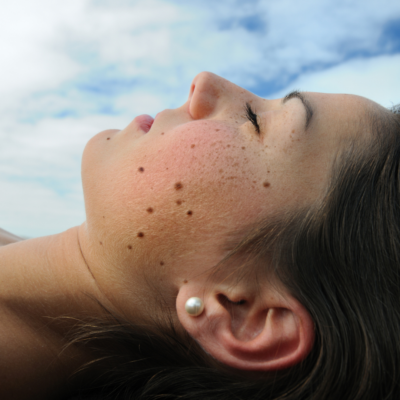Dermal Grafting
California Skin Institute offers many treatment options for reducing the appearance of acne scars, with one such treatment being dermal grafting. This acne treatment option is used for patients dealing with pitted and ice pick scars, and is combined with the subcision technique. The main feature of dermal grafting is the transplantation of collagen-rich cells and fibroblasts under the deep acne scar to stimulate collagen growth that eventually leads to a lifting of the scar. At California Skin Institute, our physicians have cultivated deep experience with this delicate procedure and have helped many patients achieve significant improvement in the appearance of acne scars.
How Dermal Grafting Works
Dermal grafting is an acne treatment procedure that is used to enhance the outcomes of acne subcision.
During subcision, a small needle is inserted near the scar, and is moved around under the skin to break up the scar tissue and un-tether the scar so that it can be lifted. With each treatment, the area is stimulated to produce more collagen and tissue under the scar; thus giving it support and helping to lift it over time.
With dermal grafting, your California Skin Institute surgeon will go a step further and will transplant fibroblasts and collagen-rich cells under the scar, to help the body grow additional tissue and provide support faster.
To do this, your board-certified surgeon will remove a small piece of skin from behind the ear, and will divide it into small portions that match the size of the scar. After subcision has been performed and the depressed acne scar has been separated from the underlying tissue, a small portion of the skin cells removed from behind the ear will be inserted under the skin. These cells are typically taken from the dermis, which is rich in collagen and fibroblasts, and will provide long term support for the healing process under the scar.
The added benefit of dermal grafting versus standalone subcision is that the immediate improvements are more dramatic due to the added volume from the transplanted skin tissue.
What Dermal Grafting Treats
Dermal grafting is typically used to treat deep acne scars that cannot be addressed through laser skin resurfacing, chemical peels, or microdermabrasion. Although standalone subcision is also an effective acne scar treatment, dermal grafting produces improvement faster, due to the added benefit of transplanting skin cells into the treatment area.
Is Dermal Grafting Safe?
Yes, dermal grafting is very safe when performed by the highly trained surgeons at California Skin Institute. Because we use your own skin cells, there is no chance of your body rejecting the transplanted tissue.
Further, we invest significant effort to ensure that the tissue is the correct size for the treatment area, so that the improvements look natural.
How soon will Dermal Grafting Results Appear?
You will be able to see some improvements from dermal grafting right after treatment. The scar will be lifted and will become less visible. The appearance of the scar will continue to improve as the treatment area heals and more collagen and tissue grows under the scar to provide support.
To further enhance the outcome, your California Skin Institute physician may recommend laser skin resurfacing or other exfoliating treatments after the treatment area has healed. These additional treatments can provide additional improvement in skin texture and create a smoother surface.
Dermal Grafting Side Effects
The side effects associated with dermal grafting are minimal. During the procedure, the treatment area will be numbed with lidocaine, to ensure your comfort. After the treatment is complete, you may experience some redness and mild inflammation at the treatment site, as the body begins to heal. Because your own skin is used during dermal grafting, there is virtually no chance of the body rejecting the tissue.
Disclaimer
Treatment results will vary, talk to a practitioner to see if this treatment or procedure is right for you.




 / 291 Reviews
/ 291 Reviews